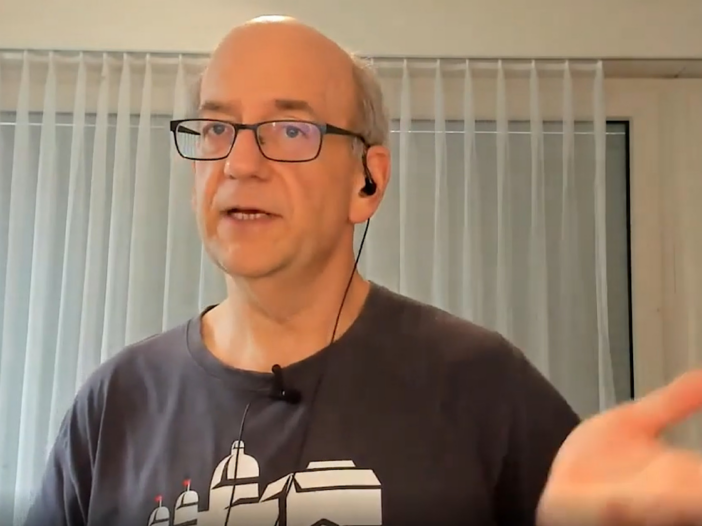Join this leadership discussion for proven techniques to build long-term relationships and keep your clients coming back.
Maximize your SEO efforts in 2024 with insights on Google’s SGE, algorithm updates, and expert tips to keep your site ahead.
Download this guide and learn how to optimize and manage Google Performance Max campaigns, with expert insights and actionable strategies to ensure your campaigns are effective.
Discover the latest trends, tips, and strategies in SEO and PPC marketing. Our curated articles offer in-depth analysis, practical advice, and actionable insights to elevate your digital marketing efforts.
Join three of Reddit’s top executives in this exclusive AMA (Ask Me Anything) to discover how you can tap into Reddit’s unique platform to drive brand growth.
Join this leadership discussion for proven techniques to build long-term relationships and keep your clients coming back.
Google’s John Mueller recently stated that a sitelinks search box is rarely shown for sites in search results.
Further, the appearance of a sitelinks search box is not at all influenced by implementation of structured data markup.
Mueller discussed this topic during a Google Webmaster Central hangout held on April 28.
A question was submitted by an SEO who mentioned their boss is upset with them.
After implementing all the correct structured data markup, Google is still not showing a sitelinks search box when the business is searched for.
Here’s what Mueller had to say in response to this issue.
A sitelinks search box is a way for people to search within a specific site from the search results page.
Site owners do not have to do anything to get a sitelinks search box to appear.
However, there is structured data available for customizing how a sitelinks search box will appear when Google decides to show one.
Whether or not the structured data is used will not impact Google’s decision to show a sitelinks search box.
In fact, Mueller says this feature is “rarely” shown in search results.
That’s confirmed by a message in Google’s official developer document about sitelinks search box structured data.
“Important: Google doesn’t guarantee that a sitelinks search box will be shown in search results. Additionally, using the sitelinks search box markup doesn’t make it more likely that a sitelinks search box will be shown.”
Mueller mentioned that he sees people struggling with this sitelinks search box issue from time to time.
But it sounds like the real problem stems from managing expectations.
In this case, the SEO may not have explained to their boss that the appearance of a sitelinks search box is not influenced by structured data markup.
That would help explain why the boss was upset when they didn’t see a sitelinks search box after searching for their business.
It’s important to keep expectations realistic when implementing any kind of structured data
There’s no guarantee Google will display a rich result just because the structured data exists on a site.
Structured data is a tool that can be used to communicate to Google how you want a rich result to be displayed.
Whether or not rich result is ultimately displayed is up to Google’s algorithm.
“With regards to sitelinks search box, this is kind of a tricky one and something I see people struggle with from time to time.
The hard part here is that adding the markup does not make it more likely that a sitelink search box will be shown. But rather, if we were to show one, we would use one that’s based on your markup.
So it’s very rare, or it feels very rare, that we would show a sitelink search box in general – for queries, for sites. And only for those cases where we would show it, if you have the markup we’ll try to use the markup, if you don’t have it we’ll just use the default setup.
So that’s something where, if you’re currently not seeing a sitelink searchbox at all, then adding the markup for that will have no effect.”
A sitelinks search box is a way for people to search within a specific site from the search results page.
Site owners do not have to do anything to get a sitelinks search box to appear.
However, there is structured data available for customizing how a sitelinks search box will appear when Google decides to show one.
Google doesn’t guarantee that a sitelinks search box will be shown in search results. Additionally, using the sitelinks search box markup doesn’t make it more likely that a sitelinks search box will be shown.
Matt G. Southern, Senior News Writer, has been with Search Engine Journal since 2013. With a bachelor’s degree in communications, …
Conquer your day with daily search marketing news.
Join Our Newsletter.
Get your daily dose of search know-how.
In a world ruled by algorithms, SEJ brings timely, relevant information for SEOs, marketers, and entrepreneurs to optimize and grow their businesses — and careers.
Copyright © 2024 Search Engine Journal. All rights reserved. Published by Alpha Brand Media.
Achieving SEO excellence: insights from the Casino Rank team – Five Reasons Sports Network
With so many casino sites competing, landing a top spot on Google feels like hitting the jackpot. Casino Rank has made great progress in search engine optimization
Casino Rank believes that transparency and trust are key to a great online casino experience. Their goal is to share accurate and useful information with you.
Their adaptability to SEO changes has also been a major factor in staying ahead of the competition. We explored their SEO approach and talked with team members to learn how they’ve become a leader in the field.
Content is a big part of Casino Rank’s strategy—not just any content, but content that’s optimized for search and truly valuable to readers. Emily Thompson, a writer for Casino Rank, believes authenticity drives their SEO success.
“We learned early that our audience wanted trustworthy and engaging info—not just keywords tossed around,” Thompson says. “Our strategy involves figuring out what people are really searching for when they type something like ‘best casino bonuses’ or ‘how to play blackjack’. Instead of just aiming to rank higher, we focus on teaching and informing. The rankings naturally follow.”
Emily highlights that Casino Rank doesn’t just produce generic articles. They also provide specific guides on how to play slots like Starburst, which has proven popular among players. They’ve invested in detailed guides, player stories, and comparison articles, helping them stand out in a crowded market. “Google rewards expertise and detail. By making the best page on a topic, we’re not just boosting our SEO; we’re also helping visitors find exactly what they want.”
SEO experts often talk a lot about keywords, but the team at Casino Rank thinks about this in a unique way.
Dave Davis, who knows a lot about poker and blackjack, gives us some tips on how they handle keyword research. “Yes, keywords matter, but it’s more about what people really want,” Davis explains. “We look at what people are searching for—and more importantly, why they’re searching. That helps us create content that answers their needs, using keywords in a natural way.”
Davis adds that instead of trying to rank for every keyword, Casino Rank picks its fights wisely. Their approach considers how users behave while betting, aiming to meet their needs naturally. “If a keyword doesn’t match what we’re offering, we skip it. We aim for organic traffic that turns into real interactions, not just numbers that look nice in reports.”
It’s not just content that matters for SEO; the technical aspects are crucial too. At Casino Rank, technical SEO, like speeding up the site and making it mobile-friendly, is key to staying at the top.
Emily Thompson shares, “We work closely with our developers to keep the website running smoothly. Great content won’t help if your site is slow or hard to use. You’ll lose visitors and rankings.”
Link building is vital for SEO, especially in competitive fields like online casinos. Keisha Bailey, a casino bonus expert, leads Casino Rank’s link-building strategy.
“To build authority, we need reputable links,” Bailey explains. “We focus on creating valuable content that others want to link to, like industry reports, bonus comparisons, and interviews with top poker players.”
SEO is more than just getting high rankings; it’s about turning visitors into leads and loyal customers. For Casino Rank, SEO is one piece of a larger strategy for generating leads.
“We think about the whole user journey,” Bailey says. “When someone visits our site, we want them to feel like we understand their needs. We guide them—whether they’re a beginner looking for tips or an experienced player comparing bonuses. By adding value at every step, we’re not just bringing in traffic; we’re building relationships.”
Casino Rank’s success shows how powerful real, user-friendly SEO can be. By mixing know-how, good content, and technical skill, they’ve found their place in a very tough market. If you want to learn from them, here’s the takeaway: focus on value, honesty, and giving users a great experience.
“In SEO, just like in poker, patience and sticking with it are key,” Davis says.
Your email address will not be published.
Google Makes Audio Ads Available To All Advertisers – Search Engine Journal
Join this leadership discussion for proven techniques to build long-term relationships and keep your clients coming back.
Maximize your SEO efforts in 2024 with insights on Google’s SGE, algorithm updates, and expert tips to keep your site ahead.
Download this guide and learn how to optimize and manage Google Performance Max campaigns, with expert insights and actionable strategies to ensure your campaigns are effective.
Discover the latest trends, tips, and strategies in SEO and PPC marketing. Our curated articles offer in-depth analysis, practical advice, and actionable insights to elevate your digital marketing efforts.
Join three of Reddit’s top executives in this exclusive AMA (Ask Me Anything) to discover how you can tap into Reddit’s unique platform to drive brand growth.
Join this leadership discussion for proven techniques to build long-term relationships and keep your clients coming back.
Google’s audio ads, designed to reach consumers streaming music and podcasts on YouTube, are now available to all advertisers.
Google is making audio ads available to all advertisers, giving businesses more ways to reach music and podcast listeners on YouTube.
Previously, specific product categories were ineligible to run audio ads. With this broader rollout, it looks like Google is lifting the prior restrictions.
Google is also adding new targeting options to audio ads. Advertisers can now specifically reach podcast listeners.
Google announced these updates during Advertising Week New York, along with several other enhancements to YouTube advertising. Here’s more information about all the new features.
Google cites data from Edison Research that finds YouTube is the second-most popular destination for listening to podcasts.
Now, all Google advertisers can reach podcast listeners with audio ads on YouTube.
Audio ads are also served to people who listen to music on YouTube. However, there’s an option to limit targeting to podcast listeners if that’s who you’re primarily interested in targeting.
For more about Google’s audio ads, including a complete walkthrough on creating them, see this detailed guide from Search Engine Journal’s Brooke Osmundson.
YouTube is launching a new offering called “Moment Blast,” designed to reach viewers during events like live sports, movie releases, or product launches.
In an announcement, Google states:
“Moment Blast gives advertisers prime positioning on YouTube Select content on connected TVs (CTV) and other devices, plus a Branded Title Card and optional Masthead placement.”
Google advertisers can now bring existing product feeds to Discovery ads on YouTube.
Discovery ads can appear in areas such as the top of the YouTube search results, the suggested videos section, or on the home page of the YouTube mobile app.
Previously, advertisers could use discovery ads to send users to a landing page, a lead form, or a YouTube video. Now they can also be used to direct users to product pages.
More information about product feeds in discovery ads will be announced at the YouTube Shopping holiday event on November 10.
Source: Google
Featured Image: Framalicious/Shutterstock
Matt G. Southern, Senior News Writer, has been with Search Engine Journal since 2013. With a bachelor’s degree in communications, …
Conquer your day with daily search marketing news.
Join Our Newsletter.
Get your daily dose of search know-how.
In a world ruled by algorithms, SEJ brings timely, relevant information for SEOs, marketers, and entrepreneurs to optimize and grow their businesses — and careers.
Copyright © 2024 Search Engine Journal. All rights reserved. Published by Alpha Brand Media.
Worldigital Unveils Comprehensive SEO and Content Marketing Packages for Enhanced Online Visibility – CMSWire
SEO News: Google Core Update, Unlinked Citations and Nofollow Link Changes – Internet Marketing News
Discover the latest news stories from the world of SEO in our latest weekly roundup. From Google’s core update for May to Google Search Console adding guided recipes support and reports, read more.
What are the latest updates from the world of SEO? In this news update I’ll be talking you through the rollout of Google’s latest core update, a new “off the search record” podcast promising undocumented information, and a discussion around whether unlinked citations help with search rankings.
According to a recent article published by Barry Schwartz (@rustybrick) on SERoundtable, Google finished rolling out the May core update on the 18th of May at 12:37pm ET. That makes for a full two week rollout, which began on the 4th of May.
Here are the tweets from Google:
According to Schwartz, the May core update was a big one in many ways, with anyone who felt it agreeing. For example, Mozcast noticed the first two days of this update, before it began to slow:
Have you seen a positive or negative impact as a result of the new core update? Do you agree with Google’s timestamp on the rollout? Let us know your thoughts by tweeting @clickthrough.
In a recent article published on SERoundtable, Barry Schwartz explains how Google Search Console has added support for guided recipes (step by step instructions on how to complete a recipe in Google Search and on Google Assistant). There is also a new enhancement report for guided recipes in Google Search Console, and the Rich Results test also supports this format.
Search Console allows you to view a Rich Results status enhancement report with the errors, warnings and fully valid pages found among your sites’ recipes. As well as this, it also includes a check box to show trends on search impressions. What’s more is that this report not only finds the issue, but also fixes it. You can then use the report to notify Google that your page has changes and should be recrawled.
The report is as follows:
It has recently been announced that Google are launching a new podcast which, as Search Engine Journal author Matt Southern puts it, “promises to live up to its name Search Off the Record”. Google’s John Mueller (@JohnMu), Martin Splitt (@g33konaut) and Gary Illyes (@methode) are teaming up to present a “mixed bag” of content about Google Search:
In the podcast trailer, Mueller states that the team will share information that has never been documented before. The Google Search team will also be discussing upcoming projects they’re currently working on:
“This is a new podcast series that we’re trying out to try to give some behind the scenes insights into what goes on at Google when it comes to search and the communications around search. Our goal is not to be another source of documentation, but rather to just give some background information on [what’s on our minds.]”
Google has yet to publish its first full episode of Search Off the Record, but you can still subscribe now from the podcast app of your choice.
On May the 21st 2020, a Twitter user asked John Mueller if “unlinked brand citations can help in defining trust of a website/brand?” Mueller replied:
Mueller then hinted that maybe SEOs can test it, but, as Barry Schwartz points out:
“If SEOs test it and say something, it doesn’t mean it is true. Even if Google says it is not true after SEOs say tests show it is true, no one knows what to believe. So Google can say yes here, unlinked citations do help and some SEOs would believe it and some wouldn’t. So I guess John figures, why bother?” (SERoundtable)
What do you think? Does Google use unlinked citations for rankings, or only for discovery? Tweet us @clickthrough.
Google recently made a change to the nofollow link policy, stating that as of March the 1st 2020, Google can look at a nofollow attribute as a hint and not as a directive. Barry Schwartz tweeted Google’s Gary Illyes asking for an update on this change, with the response as follows:
To sum up, Illyes doesn’t believe anything has been launched yet, but what he is working on will indeed need to be announced – so, watch this space.
If you’d like to discuss any of the SEO news I’ve included in this update, why not get in touch with our SEO experts today. You can also tweet me @tommy_iv.
More articles you might be interested in:
The latest version of our newsletter should have settled in your email inbox, detailing the need-to-know information and must-read thought leadership…
Arming yourself with the right tools to ensure a smooth site migration is important – find out how to protect your SEO during a migration today.
As the cost of living continues to present challenges for many Brits, an increasing number of families are choosing to holiday within the United…
Our first curated newsletter has hit inboxes, detailing all of the latest need-to-know information and sharing all the necessary thought leadership…
Over the past few years, marketing leaders have been gearing up for the inevitable ‘Cookieless Future’. Safari was the first to bid farewell to…
Google employees have recently announced that the upcoming Google Core Update is set to be released in the coming weeks. Understanding and addressing…
It only seems like yesterday that it was the winter of 2022 and we were balancing Black Friday and the Qatar World Cup. Fast forward to now and we’re…
Language matters. Any marketer worth their salt knows this. But when discussing gender and sexual orientation, that importance is amplified tenfold.
ClickThrough Marketing Ltd Charter House, Sandford Street, Lichfield, Staffordshire, WS13 6QA hello@clickthrough-marketing.com 01543 410014
©2023 ClickThrough Marketing – All rights reserved.
Photography by Andrew Craner
Why Google Might Show Less FAQ Rich Results – Search Engine Journal
Join this leadership discussion for proven techniques to build long-term relationships and keep your clients coming back.
Maximize your SEO efforts in 2024 with insights on Google’s SGE, algorithm updates, and expert tips to keep your site ahead.
Download this guide and learn how to optimize and manage Google Performance Max campaigns, with expert insights and actionable strategies to ensure your campaigns are effective.
Discover the latest trends, tips, and strategies in SEO and PPC marketing. Our curated articles offer in-depth analysis, practical advice, and actionable insights to elevate your digital marketing efforts.
Join three of Reddit’s top executives in this exclusive AMA (Ask Me Anything) to discover how you can tap into Reddit’s unique platform to drive brand growth.
Join this leadership discussion for proven techniques to build long-term relationships and keep your clients coming back.
John Mueller provides reasons why Google might decide to show less FAQ rich results in the search results
In a recent Google Webmaster Central hangout, Google’s John Mueller answered a question about FAQ rich results showing up less in the search results (SERPs). Mueller explained why Google might show less FAQ rich results in the SERPs.
Rich Results are a type of search result that takes up extra space in the SERPs. Publishers who add an FAQ to their page and also mark up it up with structured data become eligible for showing in Google’s search results with these FAQs.
Note how much space the rich results takes up. Each FAQ rich result can cause one or two search results to be pushed down to the second page of the SERPs.
The person asking the question explained that Google stopped displaying their FAQs in the search results.
They tried troubleshooting the issue to find out what was wrong with their site.
The publisher tested the URLs in Google Search Console (GSC) as well as with the Google Rich Results tester tool.
Google’s own tools showed that there was nothing wrong with the website schema implementation.
Yet the FAQ rich results were gone from the search engine results pages (SERPs).
The publisher wanted to know why Google was no longer showing the FAQ rich results in the SERPs.
John Mueller declined to offer an explanation specific to that publisher.
But he did give a general explanation as to why FAQ pages might have gone missing in the SERPs.
Mueller said:
“In general, if the markup is on the pages and is “findable” with the rich results test, then that’s what you should be aiming for.
With regards to FAQ markup in general, one of the things that I’ve noticed people talking about online is that we’re showing fewer of these in the search results.
And that’s something from my point of view, that’s kind of natural development, where we try to find the right balance between showing these everywhere and showing these for pages where it kind of makes more sense.
And that’s something that generally doesn’t have any kind of effect from the markup that you have on the pages themselves.
It’s really more that suddenly everyone has added FAQ markup to their pages and we can’t show every search result with FAQ markup.
So we have to kind of fine tune which ones, which queries, which pages we would be showing the FAQ rich results type for.”
According Mueller, there were so many FAQ markup pages that Google decided that they couldn’t automatically show all of them.
Although he didn’t say it, the implication is that too many FAQ rich results may have impacted the user experience, since FAQ rich results tend to shrink how many pages are shown in the SERPs. So instead of ten results, it could be that only eight or less pages are shown in the search results because of the FAQ rich results.
The other notable insight is that adding structured data necessary for a rich result does not automatically entitle that page to a rich result. This is true at least for the FAQ rich results.
John Mueller referenced showing FAQ pages where it makes sense as a possible explanation of why Google appears to be showing less of these kinds of rich results.
He didn’t indicate what kind of queries Google might consider as making sense for showing FAQ rich results.
Watch the Webmaster Central question and answer here:
I have 25 years hands-on experience in SEO, evolving along with the search engines by keeping up with the latest …
Conquer your day with daily search marketing news.
Join Our Newsletter.
Get your daily dose of search know-how.
In a world ruled by algorithms, SEJ brings timely, relevant information for SEOs, marketers, and entrepreneurs to optimize and grow their businesses — and careers.
Copyright © 2024 Search Engine Journal. All rights reserved. Published by Alpha Brand Media.




